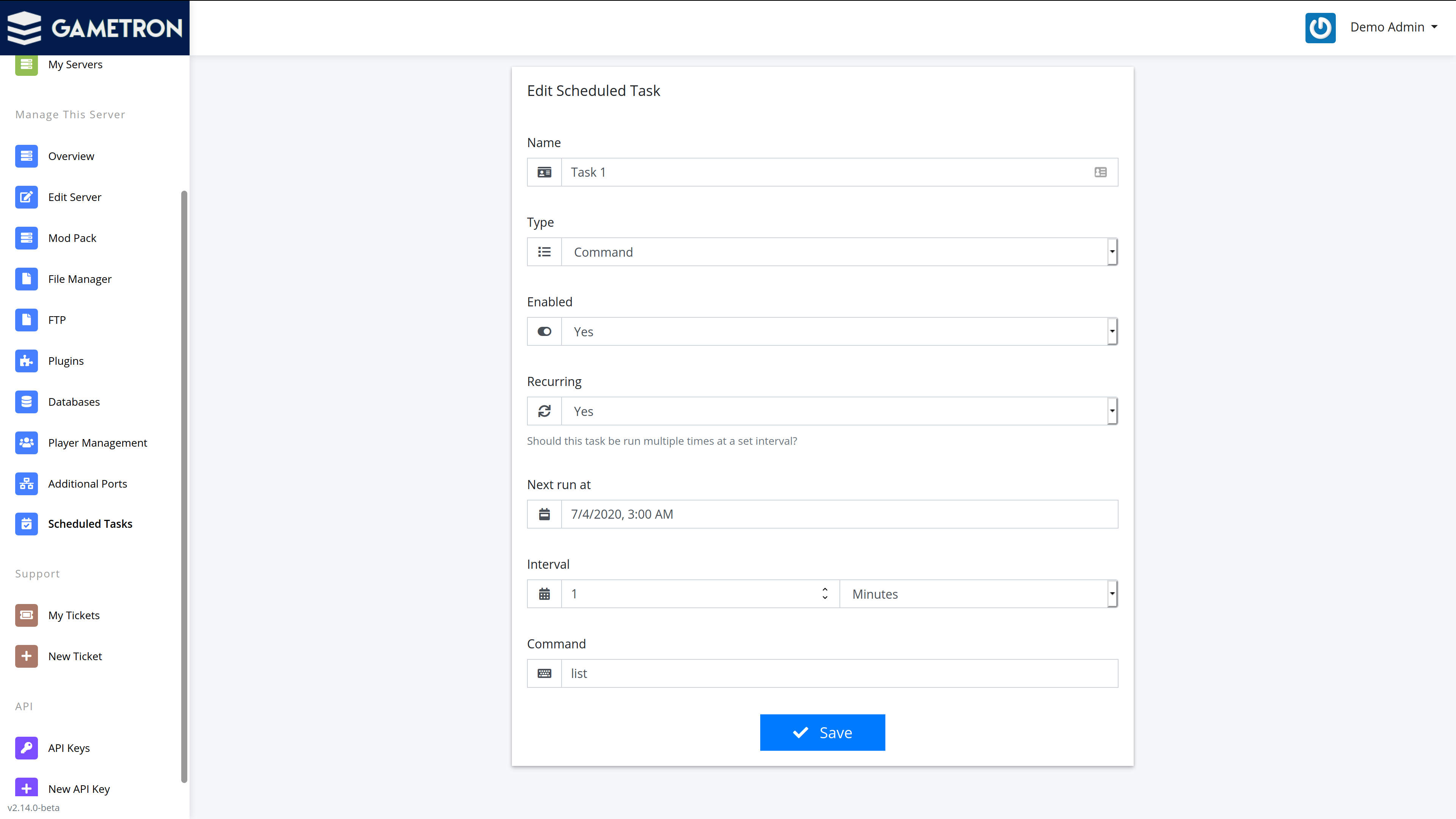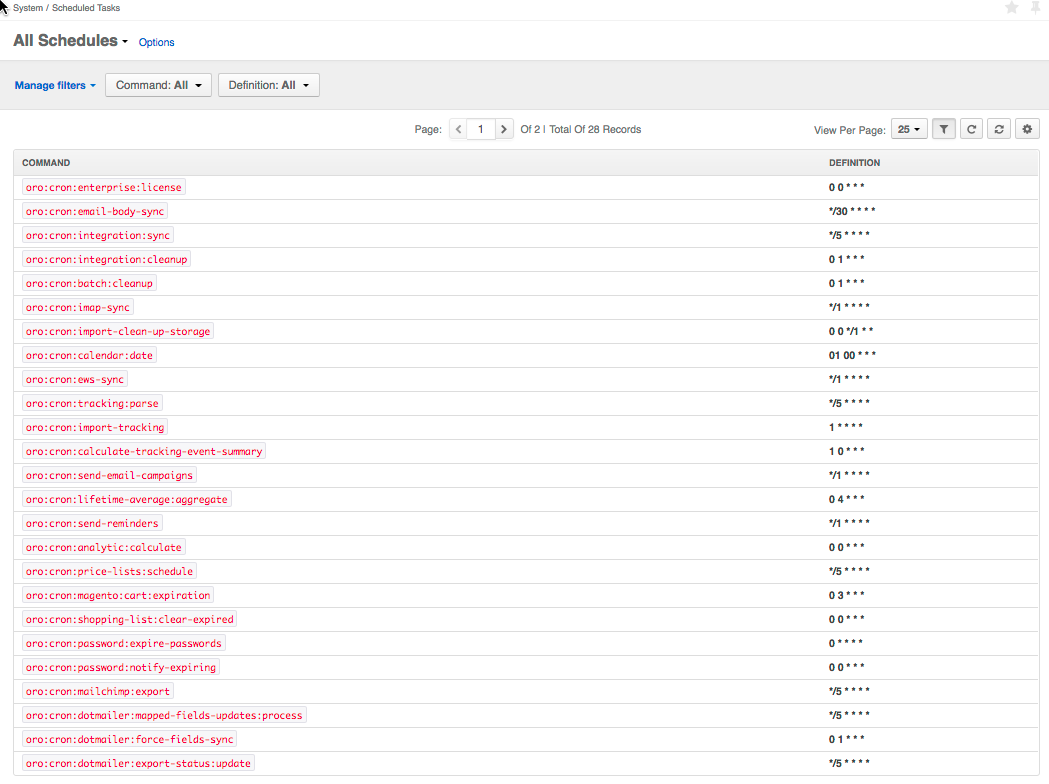

- #SCHEDULED TASKS COMMAND LINE HOW TO#
- #SCHEDULED TASKS COMMAND LINE PASSWORD#
- #SCHEDULED TASKS COMMAND LINE LICENSE#
Office 365 users’ password expiry report. Schedule non-owner mailbox access report. Export shared mailbox permission report periodically. Schedule Office 365 users’ login history PowerShell report. Periodic report on Office 365 users’ last activity report. Schedule Dynamic Distribution Group Membership PowerShell script. Schedule Distribution Group membership PowerShell script. #SCHEDULED TASKS COMMAND LINE LICENSE#
Schedule Office 365 users’ license report.Schedule Office 365 Mailbox Permission report.Schedule Office 365 users’ last logon time report.Periodic report of Office 365 users MFA status.Track Office 365 users’ login history – Keep audit log for more than 90 days.There are more scripts available on the internet which are scheduler friendly (Credentials can be passed as a parameter instead of saving inside the script).

So that you don’t need to manually run a script on daily/Weekly/monthly basis. Using Task Scheduler, you can schedule a PowerShell script to run periodically. The saved task uses the pre-created action and trigger values that are specified by $Action and $Time variables. The above cmd saves a scheduled task with a name “Schedule MFA Status Report” in the root folder.

Register-ScheduledTask -TaskName "Schedule MFA Status Report" -Trigger $Time -Action $Action -RunLevel Highest For example, I am going to schedule a script that exports Office 365 users MFA status report.
In ‘ Add arguments’, -File parameter is the default one so simply specify the script path. You can find powershell.exe in your system32\WindowsPowerShell\v1.0 folder. To schedule a script, we need to select powershell.exe. Using Browse, select program/script field. In the Action drop-down, “Start a program” is set by default. Expire – After the time period specified, the schedule won’t be triggered.Ĥ.Then open the next tab ‘ Actions’ and click the ‘New’ button. Stop task if it runs longer than- If the task runs longer than the expected time or never quit, task will automatically stop if it reaches the mentioned time limit. For a duration of- How long a task should continue to repeat. Repeat task every – Time interval between each task repetition. Repeat task every – It shows the number of times a task should run after a trigger is fired. Delay task for up to – This adds a random delay, so the task won’t stat at the exact time of the day. In the “Advanced settings”, you can choose to delay task, repeat task, stop task if it runs longer than the specified time period and expiry date. You can configure whether you want to run this task once or daily or weekly or monthly according to your scenario. For example, you can have it executed on a schedule, at startup, at logon or whenever a particular event occurs by selecting ‘ Begin the task’ drop-down menu. You can specify when to start the task. Here, you can set conditions that trigger a task. If the task requires elevated privileges, then select the option ‘ Run with highest privileges.’ģ.Switch to the Trigger tab and click the New button. If the account is not logged on during task execution, saved credentials will be used. When the ‘ Run whether user is logged on or not’ is selected, you may prompt to supply the credentials of the account, regardless of whether you select the checkbox ‘ Do not store password’ or not. To make a task run interactively, select the ’ Run only when user is logged on’ radio button. If this radio button selected, the task will not run interactively. It can be done by selecting a radio button labeled ‘ Run Whether the user is logged on not’. You can specify that a task should run. Specify the user on whose behalf the task will be run. To run a script from Task Scheduler, follow these steps.ġ.Open Task scheduler –> Task Scheduler Library –> Create TaskĢ.In General tab, you can set scheduler name and description about the task like for what purpose the task has created.Īvailable security options explained below. Open Task Scheduler (it can be found in the ‘Administrative tools’ or by pressing ‘Windows+R’ to open run and then type “taskschd.msc”.) Method 1: Schedule PowerShell Script using Task Scheduler Schedule PowerShell script from Task Scheduler using PowerShell 
Schedule PowerShell script using Task Scheduler GUIĢ.
#SCHEDULED TASKS COMMAND LINE HOW TO#
Let’s see how to schedule PowerShell script through Task scheduler.ġ. It will save your time and effort in executing script daily/weekly basis. Then, you can utilize Windows’ Task Scheduler to automate script execution for you. If you are frequently executing scripts at pre-defined times or specified time intervals, you may be tired of executing scripts repeatedly. PowerShell script reduces manually doing repetitive tasks.








 0 kommentar(er)
0 kommentar(er)
